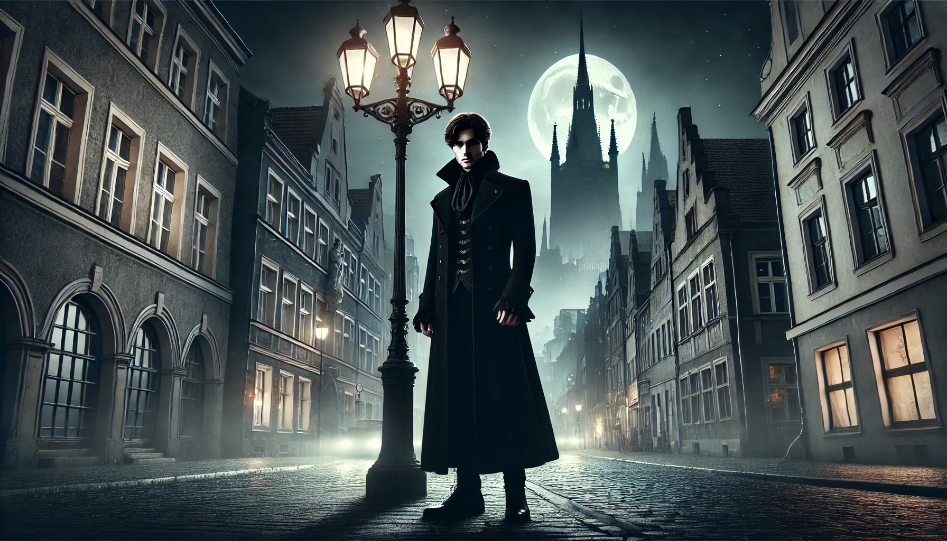The Enduring Allure of the Vampire Story Genre: A Deep Dive into Vampire Books
-
Richard Pen
| Monday 12th of August 2024 10:01:43 AM (UTC)

The vampire story genre has captured the imagination of readers for centuries. From the dark and brooding castles of Transylvania to modern-day urban landscapes, vampire books continue to intrigue audiences with their unique blend of horror, romance, and mystery. In this article, we explore the timeless appeal of vampire stories, their evolution in literature, and highlight some must-read vampire books that have shaped the genre.
The Origins of Vampire Literature
The vampire myth can be traced back to ancient folklore, with tales of blood-sucking creatures appearing in various cultures. However, it was Bram Stoker's Dracula, published in 1897, that truly cemented the vampire as a literary icon. Stoker's novel set the stage for the vampire as a symbol of fear and desire, combining elements of Gothic horror with themes of immortality, seduction, and the supernatural.
The Evolution of Vampire Books
Over the years, the vampire story genre has evolved, reflecting the changing tastes and societal concerns of each era. In the 20th century, Anne Rice's The Vampire Chronicles redefined the genre by giving vampires a voice, exploring their inner turmoil and existential crises. Rice's vampires were not just monsters but complex characters with rich backstories and emotional depth.
The 21st century saw a resurgence of interest in vampire stories, particularly with the publication of Stephenie Meyer's Twilight series. Meyer's portrayal of vampires as romantic and misunderstood beings struck a chord with a younger audience, leading to a wave of young adult vampire fiction. This shift highlighted the genre's versatility, showing that vampire stories could be adapted to different audiences and settings.
Why Vampire Books Remain Popular
The enduring popularity of vampire books can be attributed to several factors:
- Timeless Themes: Vampires embody the human fascination with immortality, power, and forbidden desire. These themes resonate with readers across generations, making vampire stories perpetually relevant.
- Versatile Storytelling: The vampire genre offers a flexible framework for storytelling. Whether it's a Gothic horror novel, a paranormal romance, or an urban fantasy, the vampire archetype can be adapted to suit various narrative styles.
- Complex Characters: Vampires are often portrayed as morally ambiguous characters, torn between their primal instincts and their human emotions. This complexity adds depth to vampire stories, allowing readers to explore themes of identity, morality, and redemption.
- Cultural Reflection: Vampire stories often reflect the fears and anxieties of the time in which they are written. For example, early vampire literature was influenced by fears of disease and death, while modern vampire books often explore themes of alienation, sexuality, and the search for meaning in a postmodern world.
Must-Read Vampire Books
If you're new to the vampire story genre or looking to explore it further, here are some must-read vampire books that have left a lasting impact on the genre:
- Dracula by Bram Stoker: The quintessential vampire novel that started it all. Dracula is a Gothic masterpiece that remains a cornerstone of vampire literature.
- Interview with the Vampire by Anne Rice: The first book in The Vampire Chronicles series, this novel offers a deeply psychological and philosophical take on the vampire myth.
- Twilight by Stephenie Meyer: A modern classic that introduced a new generation to the world of vampires, blending romance with supernatural elements.
- Let the Right One In by John Ajvide Lindqvist: A chilling and poignant story that explores the dark side of adolescence and the human need for connection.
- The Historian by Elizabeth Kostova: A richly detailed historical thriller that weaves together vampire lore and a modern-day quest for truth.
- The Southern Book Club's Guide to Slaying Vampires by Grady Hendrix: A recent addition to the genre, this novel offers a fresh and humorous take on vampire fiction, set in the 1990s suburban South.
- Blood Moon Chronicles: A Captivating Vampire Tale: Dive into a thrilling journey filled with suspense, romance, and supernatural intrigue. This tale, Blood Moon Chronicles, is a must-read for those who crave a modern twist on the classic vampire story.
Conclusion
The vampire story genre continues to thrive, captivating readers with its rich blend of horror, romance, and complex characters. Whether you're drawn to the dark allure of Gothic tales or the thrilling excitement of modern vampire fiction, there's a vampire book out there for every reader. As the genre continues to evolve, it remains a powerful reflection of our deepest fears and desires, ensuring that vampire stories will remain a beloved part of literature for years to come.
For more insights into timeless literary genres and must-read book recommendations, check out our article on The Art of Storytelling: Unlocking the Power of Your Imagination. Explore how different genres continue to shape the world of literature and captivate readers worldwide.
Start the conversation
Become a member of TxtTale to start commenting.
Already a member?
